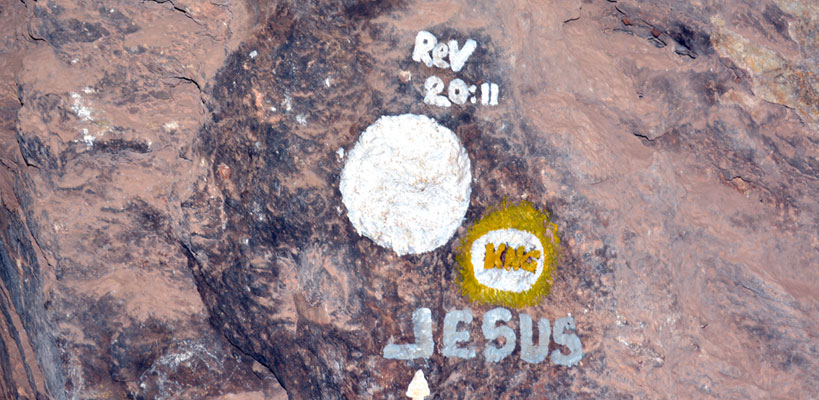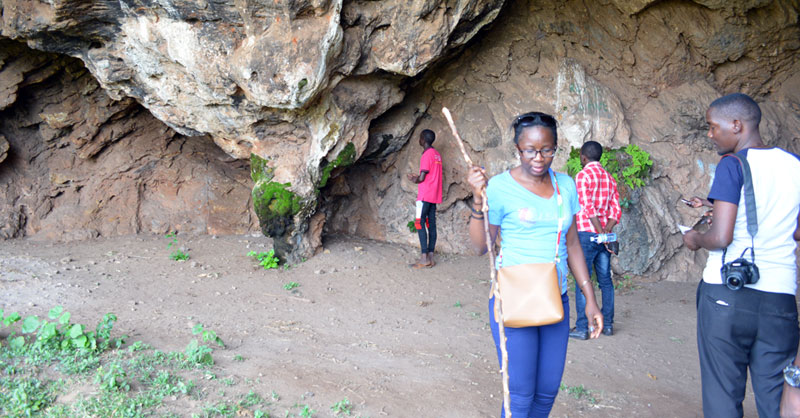human traffickingFeatures
Tororo Rock: ‘Where Satan chased God’
It all started with a media study trip courtesy of the African Centre for Media Excellence (ACME). We had time particularly spared for relaxing and interacting with communities in the areas we visited.
Eyeing in amazement, a group of journalist asked why a rock, which they suspected to have great mineral potential, had seemingly been left redundant in the middle of Tororo town, in eastern Uganda.
Some of the journalists agreed to climb the rock to its highest point, some 4,865ft above sea level.
At the foot of the rock we were told by our tour guide, Enos Sabila, that reaching the top was no walkover but whoever reached there would be rewarded with a commanding view of the surrounding areas.
At the trailhead (the point where a trail begins), on the eastern side, Sabila showed us a cave. Adjacent to it is a church-like structure established by Majestic Tours, the company which manages tourism activities at the rock. Sabila explained that the rock was a result of a volcanic movement about 300 million years ago.
Sabila further explained that the cave at the trailhead was a volcanic plug (this is created when volcanic magma hardens inside a vent). The Iteso and the Japadhola, the dominant tribes in the area, have for many years used it for rituals.
Sabila warned us about bats, snakes and other reptiles that made the cave their own home. Amazingly we all rushed into the cave to see what was going on there.

Journalists Frankline Draku (Daily Monitor) and Dinah Nalubega (newvision) trying to hike (photo by Gabriel Buule)
Inside were inscriptions onto the wall of the cave praising Jesus Christ and God, seemingly written some time ago. There were no signs of active occupation.
With bats flying around and lizards all over, Sabila told us to stay still and just in case we saw any snake passing we only needed to stay calm.
The cave was once occupied by Born Again Christians whose fear of snakes made them run away
Sabila told us that the cave was once a centre of religious controversy. A born again Christian sect allegedly hijacked it from traditionalists apparently to cleanse it. This conquest was, however, short-lived. One day when the Pentecostals gathered in the cave to praise and rebuke the devil, snakes huttled from above the cave vent causing mayhem among the church goers. This act of satan made the Born Again Christians to run away never to be seen again thus letting the traditionalists reclaim their space.
This rock has always been a symbol of prestige to the people of Tororo. It is their heritage. Sabila told us that during the days of colonialism, people would go to the cave and seek favours from their gods and then climb to the top of the rock to pray for the release of their loved ones jailed in Morukatipe prison, a few kilo metres away from the rock.
Daring a steep terrain, lizards and light headedness, it took us almost an hour to climb to the top of the rock. It was an opportune moment for photos though.
On top of the rock are several structures including masts owned by Airtel and Uganda telecom. There is also a cable car seemingly abandoned.
Janat, who was part of the team, asked Sabila why we didn’t use the cable car instead of walking and his response was comical yet frightening:
“The cable car was installed by Airtel to ease the transportation of fuel meant for the generators that power the mast. Later on it was open to the general public though a few locals could afford using it.
“One day three students from Rock High School (a nearby school) planned to shoot a video on the cable car and they had been reportedly convinced that the video could go viral on the internet and perhaps they could get a lot of money.
“Sadly they didn’t have money to use the cable car. The improvised and resolved to use tool belt holders meant for electricians to roll on iron ropes on which the cable car moves.
“Hoodwinking management and security, the students went on their quest for fame with one filming and the other two rolling on the rope. Unfortunately for them the belts, made out of synthetic fibre, could only ware out in a short while with friction against the iron ropes,” narrated Sabila.
“What happened later?” Another colleague asked. Sabila took a deep breath and in a creepy voice, with his tone a bit down, and with most of us anxiously waiting for the answer, he said:
“…. the boys suddenly, 4,865 feet down the rock, of course they had to die! Beyond recognition.”
Sad story it was to end our trip up Tororo rock but the adventure was worth every pain and penny.
Comments































